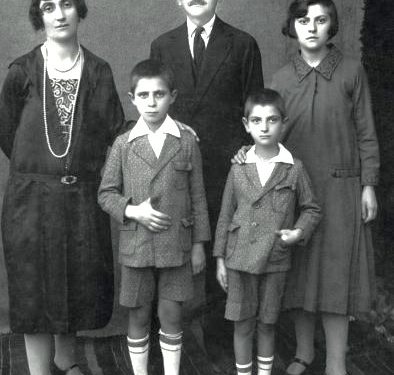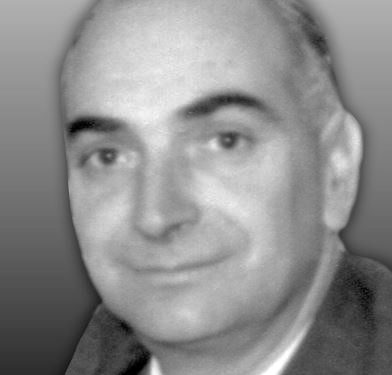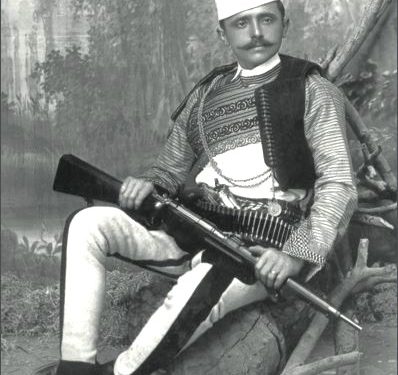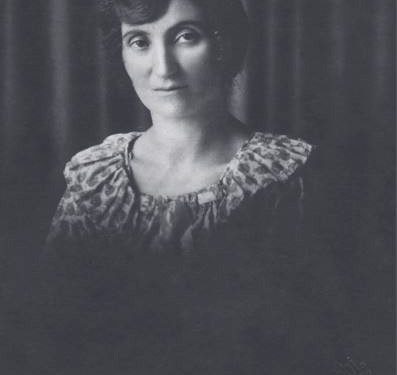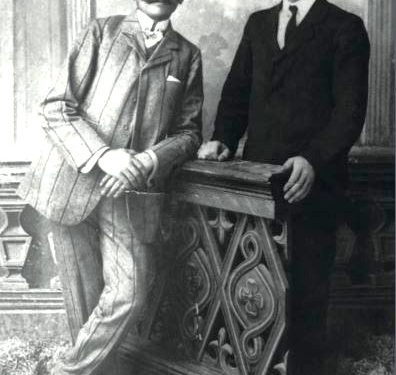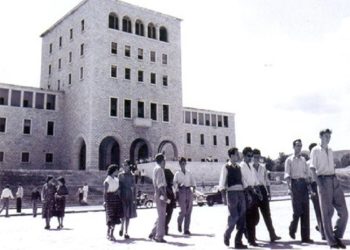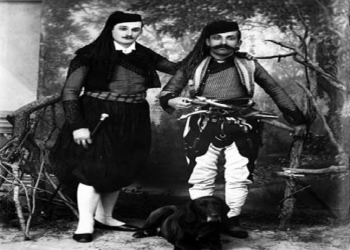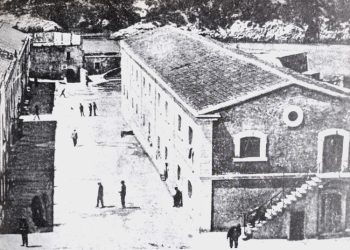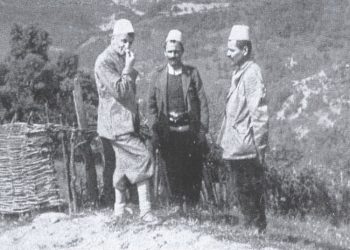Memorie.al / The origin of this well-known family are from Shkodra. Marie Kaçulini was married to a wealthy family of Durrsak merchants at the beginning of the 19th century. Sometime later, around 1830, she became a widow and for personal choice, decided not to return to her parents in Shkodër, but to stay in Durrës. Mikel Kaçulini I (1850 – 1912). In order not to leave Marie alone, her brother, after a few years, sent his son, then only 10 years old, to live with him in Durrës. Mikel Kaçulini must have come to Durrës around 1860. When he came to Durrës, he was 10 years old. After a few years, he married Prena Mamli and together with her, managed a restaurant in the “Kala” neighborhood of the city. Two children would soon be born to the Kaçulini couple: Stefani and Agetina Kaçulini. It was the time when the first Balkan riots started and the Durrës coast and also Albania would be in the eye of the cyclone of history.
The first generation and the second generation of the Kaçulini family
Agetina (year of birth and death unknown), had two children: Maurisa and Pjerinin. She died young and left her children very young. Their upbringing was taken care of by their brother, Stefan, who, after helping them financially for a while, also helped them immigrate to the United States of America.
Stefan Kaçulini (1877 – 1947)
Stefan Kaçulini, was born on October 8, 1877. It was the time when the Balkans was boiling with people’s uprisings for independence from the Ottoman Empire. Ironically, while Stephen was only 6 months old, on March 3, 1878, the Turks would sign with the Russians, the Treaty of Saint Stephen, an agreement that would badly tear Albania apart and would have a tremendous impact on the national war for appropriation. This was the context in which the most important son of the Kaçulini family was born.
The Kamur Kaçulini family spared no effort for Stefani’s education, who was first sent to receive basic training in the Italian school of the city, and then in the Greek one. This made him a good connoisseur, not only of classical Greco-Roman culture, but also of modern languages, such as; Italian, Greek and the official language, Turkish. “I suffered a lot, just because I nurtured national feelings”! Stefan Kaçulini, “Autobiography”
At the same time as he received his official education, he attended privately and illegally the Albanian language lectures, which were led by the priest Don Nikoll Kaçorri, in the premises of the Saint Lucia Church. In 1898, that is, at the age of 22, he started leading small groups for learning the Albanian language. His first students were Izedin Beshiri, Eqrem Beshiri, Hysen Ramzoti and Myslym Luga. Activity that he continued illegally until 1903, teaching with dozens of other students. In 1904, at the age of 27, Stefani will marry Lucia Sheldian from Shkodra. He had 3 children with her. Two sons, who would die young, and a daughter, named Ana (Nusha).
In the same year, he would open a stationery shop, which would have a key role, not only in the struggle for independence that took place in Durrës, but also in the one that took place throughout Albania. In fact, all the propaganda material that entered the port of Durrës, after passing through the customs illegally with the help of Hysen Halim, Abaz Çelkupa and Kristaq Rama, was stored and distributed in 2-3 points, one of which was Stefan Kaçulini’s stationery. The newspapers “Albani”, “Atdheu”, etc. were used in this mailroom. Just like the books of Naim Frashëri, Jani Vreto, etc.
In 1907, he would be one of the founders of the Patriotic Club “Vellaznia”, and in 1909, of the Patriotic Club “Bashkimi”, where he also held the office of secretary. During 1911, he was arrested twice. Lucia Sheldia, Stefani’s wife, died young and left him a widow in 1912. In the same year, Mikeli Kaçulini I, his father, also dies. Two deaths had happened to Stefan, precisely in the most important year of the existence of the Albanian nation. He never had time to mourn his loved ones, as the homeland was in danger. At the beginning of November 1912, he would be a signatory of the so-called Durrës Memorandum, addressed to Emperor Franz Joseph I.
Meanwhile, at the end of November of that year, he is intensively dealing with the reception of Ismail Qemali in Durrës. According to his testimony, he was the only Durrsak who received Ismail Qemali at the port of Durrës, when he landed here on the 21st. With the arrival of Prince Vid in 1914, he will align himself with the party of his supporters, taking after the grudge and revenge, first of Haxhi Qamili, and then of Esat Toptan, when Vidi fled Albania.
The latter, in particular, would cause the Kaçulini family an incalculable economic damage, when it would seize all their property, between the years 1914-1916. In 1916, he was appointed as treasurer in the Municipality of Durrës. He held this responsibility until 1919. From 1919-1921, he was an inspector of this municipality.
From 1921-1923, he was director of the Directorate of World Affairs, i.e. of Public Affairs. After 1923, until 1933, he was the chief storekeeper of the Durrës Municipality. At the end of 1933 he retired. He was only 56 years old. He had no privileges from the Albanian state, except for a minimum pension of the time, which, moreover, he did not receive regularly due to the war and political instability. He died in Durrës, from a heart failure, on January 4, 1947, at the age of 70.
Titles and honors:
By decree of the Presidium of the People’s Assembly, since 1962, he has been decorated “For patriotic activity” of the IIIrd Class. In 1992, meanwhile, he was decorated with the order, “For patriotic activity” of the 1st Class. One of the main streets of the city of Durrës also bears the name “Stefan Kaçulini”.
Marie Kaçulini (year of birth unknown – date of death, July 24, 1970)
Marie Kaçulini, came from the Gurakuqi family from Shkodra. She lost her parents when she was still a child, only 9 years old. However, she managed to successfully pursue her studies, first at the school of the ‘Stygmatine Catholic Sisters’, and then at the ‘Salesian Sisters’ Catholic Female College’ in Shkodër. Mary’s pedagogical skills were immediately noticed by the Church, which appointed her to teach the Albanian language to Italian sisters and elementary classes.
The marriage with Stefani, celebrated in 1913, was mediated by the famous Kel Marubi. They had 3 children, Ana Nushe, Mikel and Jozefi. Upon arrival in Durrës, Maria will be involved in several special cultural activities, the most prominent of which was the development of carnivals in the city. In 1916, she will be appointed the first headmistress of the female primary school in the city of Durrës.
As the director of that school, she would have a very important role in the prominence and, subsequently, the professional growth of two other very important figures of Durrës education, Bedrie Bebeziqi and Eftali Koçi. In the early 20s, she was a member of the Youth Organization of the American Red Cross and then, in 1923, she was also a member of the Albanian Red Cross.
During the following decades, he almost always held leadership roles in several schools of the city, giving an irreplaceable contribution to the development of the entire educational system in the city of Durrës. Entire generations, not only of students, but also of teachers, would grow professionally and intellectually, under the experience of Marie Kaçulini, making her, without any doubt, the most prominent figure of Durrsak education. 11 months after losing her husband, on December 30, 1947, Maria retired with honor from the Albanian state. She died in Korça, where she had moved with her sons, for work reasons, on July 24, 1970.
Honors and titles:
Marie Kaçulini was honored by the decision of the Presidium of the People’s Assembly, in 1954, as an activist of the Women’s Organization. Meanwhile, in 1992, by decree of the President of the Republic, she was given the title “Teacher of the People”. Today, in her honor, one of the main schools of the city of Durrës is named “Marie Kaçulini”.
Ana Nushe Kaçulini, (year of birth and death unknown)
She studied at the “Robert” American College in Istanbul. He will return in the mid-1930s to Tirana, where he will marry Luigj Gurakuqi (not the patriot, who bears the same name). Nusha had three children: Xovana, Luiza and Toni Gurakuqi.
Mikel Kaçulini, I (1850 – 1912).
He was born on February 14, 1918 in Durrës. He studied in Bologna (Italy) for Chemical Engineering and in 1943, after completing his studies, he returned to his homeland. During the years of his stay in Italy, he became friends with Qemal Stafa. After the years of the Second World War, the country ravaged by war and the lack of qualified personnel, had a great need for Mikel’s skills and abilities. He practiced his profession as an engineer for many years, in several large enterprises of the country (Vlora, Elbasan, Rubik, Rrogozhinë, Tirana, Korçë, Durrës, etc.), making a great contribution to the fragile economy of the country.
Jozef (Bep) Kaçulini, (1921 – 2002)
He was born on March 14, 1921, in Durrës. He studied Medicine, first in Bologna and then during the years 1948-1952, with the expenses of the Albanian government (scholarship), he specialized in Medicine in Prague. After returning to Durrës in 1952, he worked for a while as a doctor, until he moved to Korçë in 1954. He stayed in Korçë until 1974. On the recommendation of Iljaz Reka, he will return to Durrës after 20 years, together with his family.
Bepi, or Zefi, as his friends called him, would be one of the most distinguished doctors in the city, where he would serve until 1989, and the year of his retirement. Jozef Kaçulini, through the memories inherited from his father and personal memories would also be one of the most important contributors to the historiography of the city. It was his living memory which would help historians after the 90s to write the history of the city of Durrës in an impartial way. Holds the honorary titles: “Honor of the City of Durrës” and “Grand Master”. He died in Durrës, on January 25, 2002, at the age of 81.
The third generation, of the Kaçulini family
Aurel Kaçulini (1954). He is the son of Jozef Kaçulin and he was born in Korça, during the years when his father served there as a pulmonologist. He finished high school at the “Naim Frashëri” gymnasium in the city of Durrës. Then he graduated from the Polytechnic University of Tirana, in the field of Mechanical Engineering. He served as a mechanical engineer in the Directorate of Railways, during the years 1992-1993. Then, during the years 1993-1998, he worked as an engineer at the State Maritime Agency, until its privatization.
The founder of several successful enterprises in Durrës, he is one of the champions of Durrës culture, with a great contribution to clarifying the history of the city and promoting culture and art in Durrës. In this direction, goes the activity of the “Jozef” Publishing House and the Art Gallery of the same name, which has been operating for more than a decade.
Aurel Kaçulini was a member of the Durrës “Rotary” Club. It bears the title: Honor of the City of Durrës. It has the distinction of being one of the oldest cities in Albania. It has played an active role in almost all historical events that have taken place in the country and beyond. Events of historical proportions, which had as protagonists first of all persons and families who sacrificed everything in the name of Durrës and Albania.
Their actions echo throughout history and are still a source of inspiration for young people, who today more than ever, in the era of fluid realities and values, need healthy reference points.
Patterns
The purpose of these publications is to bring or bring back these stories, events or activities, above all the sacrifices of large and old families from Durrës, and to turn them into a source of inspiration for a more active social and community life, and responsible.
“The City That Confesses”
For this purpose, the young people of the Informal Group “Heritage Compass”, in cooperation with the Amfora Media team, undertook the “City that Tells” initiative, to collect the testimonies of the heirs of the old families of Durrës and publish them through creative forms online.
Purpose
- Families which have been present in Durrës at least since the end of the 19th century or the beginning of the 20th century;
- Families from which at least two generations of intellectuals or outstanding political, social and religious personalities have emerged;
- Families who continue to live in Durrës and are active in community life. The collection of stories was done through archival research, unpublished family manuscripts, literature and interviews with heirs.
Selection of families, interview: Central State Archive. Gf. 3. Fund.235. Year 1937. Doc. 198. Central State Archive. Gf. 1. Fund.489. Year 1962. Doc. 51 • Hidri Sali. “Stefan Kaçulini in the patriotic movement of Durrës”. Toena. Tirana 2004. Methodology; Bibliography. With the representative of the Kaçulini Family, Mr. Aurel Kaçulini, dated May 14, 2022. Memorie.al




